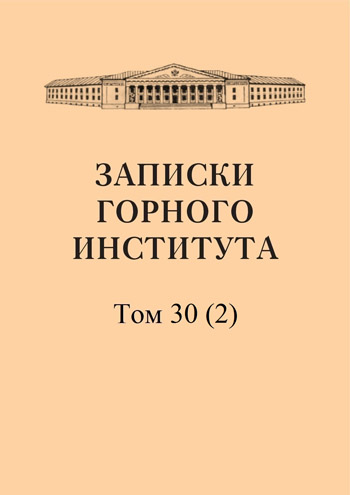The structure of the ore field of the Bazhenov asbestos region as the most important criterion in the search for "blind" deposits
- канд. геол.-минерал. наук
Abstract
Study of the structure of the ore field of the Bazhenov asbestos region shows that when determining the possible location of "blind" deposits, one should primarily proceed from the tectonic elements of the structure. Lithological factors only narrow the area of chrysotile asbestos deposit searches, limiting it to the peridotite part of the ultrabasic rock massif. The connection of asbestos formation with weakly mineralized hydrothermal solutions leads to the exclusion from the search area of areas with intensive development of quartz-carbonate, talc-carbonate and talc rocks that arose under the influence of high-temperature, highly mineralized solutions of granite intrusion. Areas with predominant development of hydrothermal autometamorphism, the physical conditions of which usually do not correspond to the conditions for the formation of chrysotile asbestos, are also of little promise for exploration. After these exclusions, the area for searching for "blind" ore bodies still remains enormous. Specific localization points "blind" deposits can be identified only taking into account the presence of favorable and unfavorable combinations of tectonic faults and fault zones (see article). The main structural criteria for searching for "blind" deposits outlined in the article do not cover all the issues of the complex pattern of distribution of chrysotile asbestos deposits in the body of the Bazhenov massif of ultrabasic rocks, the knowledge of which can facilitate the search. Some of these issues are only touched upon in this work, while others can only be resolved after further accumulation of factual materials. These include issues of changes in the structure of the ore field with depth and searches for "blind" deposits of the second and subsequent tiers. It is necessary to study in detail the dependence of the localization of chrysotile asbestos deposits on the composition of primary rocks and changes in the physicochemical composition of hydrothermal solutions. The development of these issues is a necessary matter for the near future.
References
- Bowen N.L. and Tuttle O.F. The MgO-SiO2-H2O System. Collection of "Problems of Physical Chemistry in Mineralogy and Petrography". Foreign Literature Publishing House, 1950, pp. 23-48.
- Lodochnikov V.N. Serpentines and Serpentinites, Ilchir and Others. Proceedings of the Central Research Institute of Geology and Mineralogy, 1936, issue 38.
- Syromyatnikov F.V. On the Synthesis of Serpentine. Proceedings of the Conference on Experimental Mineralogy and Petrography, April 26-28, 1934. Publishing House of the USSR Academy of Sciences, 1935.
- Tatarinov P.M. Asbestos. Course of Non-Metallic Deposits. Part I. ONTI, 1934, pp. 177-203.
- Tatarinov P.M. Eastern Stripe gabbro-peridotite intrusions of the Middle Urals. Petrography of the USSR, Series I, Issue 9, Part I. Publ. USSR Academy of Sciences, 1940.
- Tatarinov P.M. Materials for the study of chrysotile-asbestos deposits in the Bazhenov region in the Urals. Proceedings of the Geological Committee, new series, 1928, Issue 185.
- Tatarinov P.M. Search criteria and features for asbestos deposits. Notes of the Leningrad Mining Institute, 1948, Vol. XXII.
- Tatarinov P.M. Structure of the ore field of the Bazhenov asbestos region. Proceedings of VSEGEI, 1948, Issue 4.
